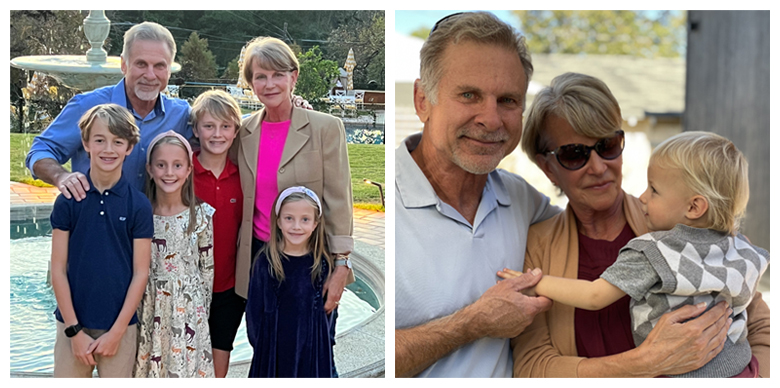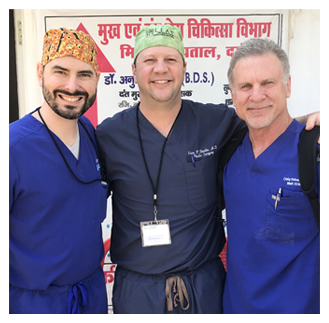At some point in their lives, either very early on in the aging process or in the latter part, women and men in Dallas generally fall into one of three categories. The first group includes those that would never consider having their eyes done because they hate the prospect of seeming vain or are frightened at the possibility of having an alarmed, wide-eyed unnatural look – or worse, one that is not healthy because too much skin has been removed from the eyelids and they cannot properly close and do their job of lubricating the eyes. The second group includes those that have unfortunately had surgery with less than desirable outcomes. The third group – and the one you want to be in – includes those that have had their eyes done by a well qualified plastic surgeon that created a very natural, beautiful result. Excess skin in the upper eyelid can be aesthetically unappealing, but can be obtrusive as well. It can make reading difficult and cause your eye makeup to smear. Aging in your lower eyelids will literally stop people in their tracks to ask you, “Is everything OK? You look so tired!” And you are not tired, but you are tired of being asked that question. Eyelid Surgery is the second most common cosmetic surgical procedure in the United States. According to a survey by the American Society of Plastic Surgeons (ASPS), in 2014, over 200,00 patients in the United States had this procedure performed.
What is eyelid surgery?
Eyelid surgery is a surgical procedure done under general anesthesia that eliminates excess skin from the eyelids, repositions and tightens the underlying supportive muscles and connective tissues and repositions and reduces the fat deposits to their appropriate position and size. It is referred to as blepharoplasty in medical terms. Dr. Hobar has a unique approach to eyelid surgery compared with some of his colleagues in that he advocates a conservative approach.
As Dr. Hobar states,
“It is important to understand that aging in the eyelid is often confounded by aging in the brow and midface region. When a patient comes to see me and they want to fix their lower eyelids, I make certain to determine if this is a problem that exists in isolation or one that is being exacerbated by a sagging midface region. Many times, surgeons incorrectly remove too much skin from this area and thus put undue tension and strain on the lower eyelid. This solution provides a fix that is both temporary and problematic. The tissues of the eyelids are extremely delicate in nature and cannot support the weight of a falling midface if that is in fact a mitigating factor. Likewise, an aging brow falling onto the upper eyelid cannot be fixed by only focusing on the upper eyes. While the results might be acceptable for a few years, the long term prognosis is not acceptable.”
Because of the interactive nature of the upper and lower eyelids with the adjacent facial regions of the midface and brow, it is extremely common to have eyelid surgery in conjunction with a midface lift or a brow lift. When you have one of these two regions contributing to aging in the eyelid area and you choose not to address them and focus exclusively on the eyes, you then accept the possibility that you will not have 100 percent resolution of the problem. Many people are delighted to have a 50 to 75 percent improvement and know that as time marches on, they have not eliminated the possibility to come back at a later date and address the brow and midface region (should it begin to bother them). During your Consultation with Dr. Hobar, you will discuss with him the merits and possible pitfalls of electing to operate only on the eyes.
However, there are plenty of patients who have aging and changes in the eyelids that are out of proportion with the other regions of the face. These patients are ideal candidates for having a blepharoplasty done in isolation.
Dr. Hobar always performs eyelid surgery with careful respect to the physiology of the eye. By removing a conservative amount of tissue, his patients are ensured that their eyelids can continue to do the important job of protecting and lubricating their eyes as they grow older.
A Qualified Dallas Eyelid Surgeon
The eyes are said to be the window to the soul. They are oftentimes the most noticeable characteristic of a person’s face and they are responsible for communicating a myriad of nonverbal messages. More importantly, they provide us with our most valuable sense of vision. The function of the eyelids is to support, lubricate and protect the eyes. This functional aspect greatly outweighs the importance of any aesthetic advantage they serve. Because of Dr. Hobar’s extensive experience with cosmetic eyelid surgery and his expertise in orbital reconstructive surgery, he has a greater respect for the complex design that is necessary to preserve the eyelids functionality. He is able to skillfully and artfully create a subtle change in the eyelids that will not inhibit their function, but that will reveal a more rested, natural expression that highlights a person’s expressive eyes. His goal is to create a result that is subtle and long-lasting.
According to Dr. Hobar,
“It humbles me when my patients come in for their check-up and tell me that no one suspects that they had their eyes done. Instead, they report people complimenting them on how well-rested and pleasant they appear. Overdone eyes are the epitome of what so many patients fear about plastic surgery. I am honored that I can show them otherwise.”
Am I a good candidate for eyelid surgery?
Most importantly, it is essential that you be in good physical health. Eyelid surgery is very safe and effective when the patient is in sound physical condition. It is important to disclose all of your current and past health conditions as well as any prescribed or over the counter medications or supplements you take. After a careful review of this information, Dr. Hobar might suggest certain preoperative tests to ensure that you are a good surgical candidate.Psychological health is also an essential component. You might need to alter certain commitments and delegate responsibility to others during the initial days of your recovery experience. Most people experience a myriad of emotions in the immediate periods before and after surgery. While this can be challenging, it is also normal. Being realistic about your goals and expectations is essential to achieving a positive outcome.
Eyelid surgery is a wonderful procedure for restoring youthfulness to eyes that have been challenged by gravity, time and genetics. As with all cosmetic procedures, it is especially important that Dr. Hobar carefully assess your eyes and the adjacent facial regions and understand your goals and concerns before recommending eyelid surgery.
How is eyelid surgery performed?
During your eyelid surgery, Dr. Hobar makes an incision on the lower lids just below the lash line. On the upper lids, the incision is made in the middle crease of the eyelids. He then tightens the underlying muscle and connective tissues in this area and re-positions the fatty deposits. He will also usually reduce the fatty deposits conservatively, careful not to remove too much of the fat that assists in creating a youthful rested appearance.When operating on the lower and upper eyelids, the procedure is usually scheduled for roughly two hours which enables Dr. Hobar to work in a focused and precise manner. You are put to sleep under general anesthesia by a well trained anesthetist (CRNA) or anesthesiologist. General anesthesia ensures a very well controlled, safe surgical experience. After surgery, you are taken to the recovery room where you are closely monitored as you awaken from anesthesia
Recovering from eyelid surgery
After surgery, you will have eyelid sutures in place. These are designed to provide support to the eyelid tissue to ensure that the incision lines heal without excessive strain or tension. These sutures are removed five days after surgery. Dissolvable sutures can also be used to close your eyelid incisions and they take seven to ten days to dissolve. After surgery, most people experience bruising and swelling. The resolution of this is usually pretty quick, and most patients feel comfortable resuming their normal social activities one to two weeks after surgery.Keep in mind that the healing process is just that – a process. You will look pretty beat up three days after surgery; this is when swelling and bruising peak. After day three, the healing process becomes highly individualized. It is not uncommon at the five day appointment for suture removal. At this point there are some patients whom have very little bruising or swelling, while others appear to still be quite swollen. Be patient with yourself and this process. While it is imperative to be active, eat well, and get plenty of rest, it is true that people heal at different paces.
Most patients’ experiences with eyelid surgery are not notably painful. While discomfort is inevitable, it is well controlled with medication and should not inhibit people from moving, eating, and maintaining a light activity level during the recovery process.






